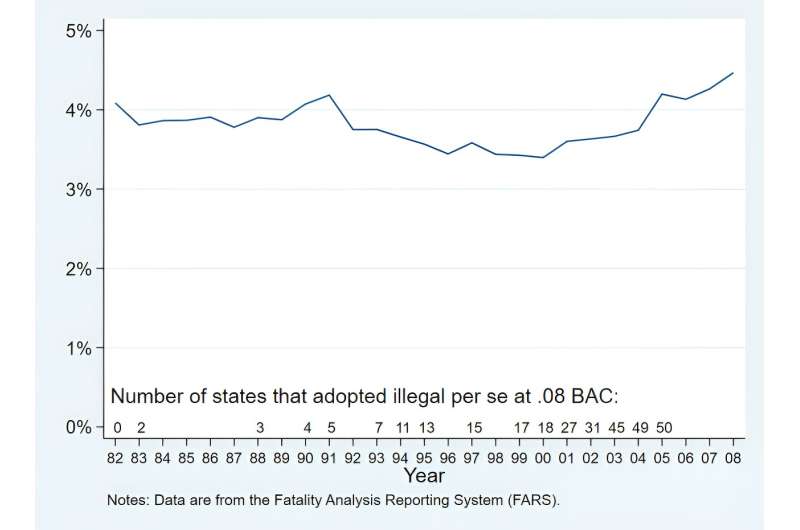This article has been reviewed according to Science X's editorial process and policies. Editors have highlighted the following attributes while ensuring the content's credibility:
fact-checked
trusted source
proofread
Stricter blood-alcohol concentration limits may lead to more hit-and-run fatalities, finds study

Stricter laws on blood alcohol concentration (BAC) limits while driving might have an unintended consequence on hit-and-run fatalities, according to a study from researchers at Florida Atlantic University and the University of Miami.
Researchers include Gulcin Gumus, Ph.D., associate professor in FAU's College of Business Management Programs , and Michael T. French, Ph.D., professor and department chair of health management and policy at the University of Miami Patti and Allan Herbert Business School.
The study, published in Risk Analysis, showed an 8.3% increase in hit-and-run fatalities associated with the adoption of .08 BAC limits.
"What we found is that the .08 BAC limit doesn't seem to make a significant impact on reducing traffic fatalities. However, once the DUI policy becomes a bit stricter with the changes in the state regulations, we find that hit-and-run crashes and fatalities increase," said Gumus. "It appears that there might be an unintended consequence of these laws whereby drivers are choosing to abandon the scene."
Researchers examined data on traffic fatalities from 1982 to 2008 in all 50 states, comparing the number of fatalities in hit-and-run crashes to non-hit-and-run fatalities where drivers stayed on the scene and controlled for other factors such as economic conditions .
"Although our study is unable to definitively confirm any of these potential mechanisms, we suspect that some drivers who are under the influence of alcohol or drugs might flee a crash scene due to severe DUI sanctions, which are often more stringent than non-DUI hit-and-run penalties," the study noted.
The unintended consequence of this law is more pronounced in urban areas and during the weekends. While the study does not address hit-and-run penalties directly, researchers believe it has important implications for lawmakers who aim to improve traffic safety.
"The somewhat unexpected findings of this research have important implications for traffic safety policy," French said. "To avoid or at least minimize the unintended consequences of a lower BAC limit, policymakers should consider increasing the penalties for hit-and-run drivers to dissuade them from leaving the scene of a collision."
More information: Michael T. French et al, Hit‐and‐run or hit‐and‐stay? Unintended effects of a stricter BAC limit, Risk Analysis (2024). DOI: 10.1111/risa.14280




















